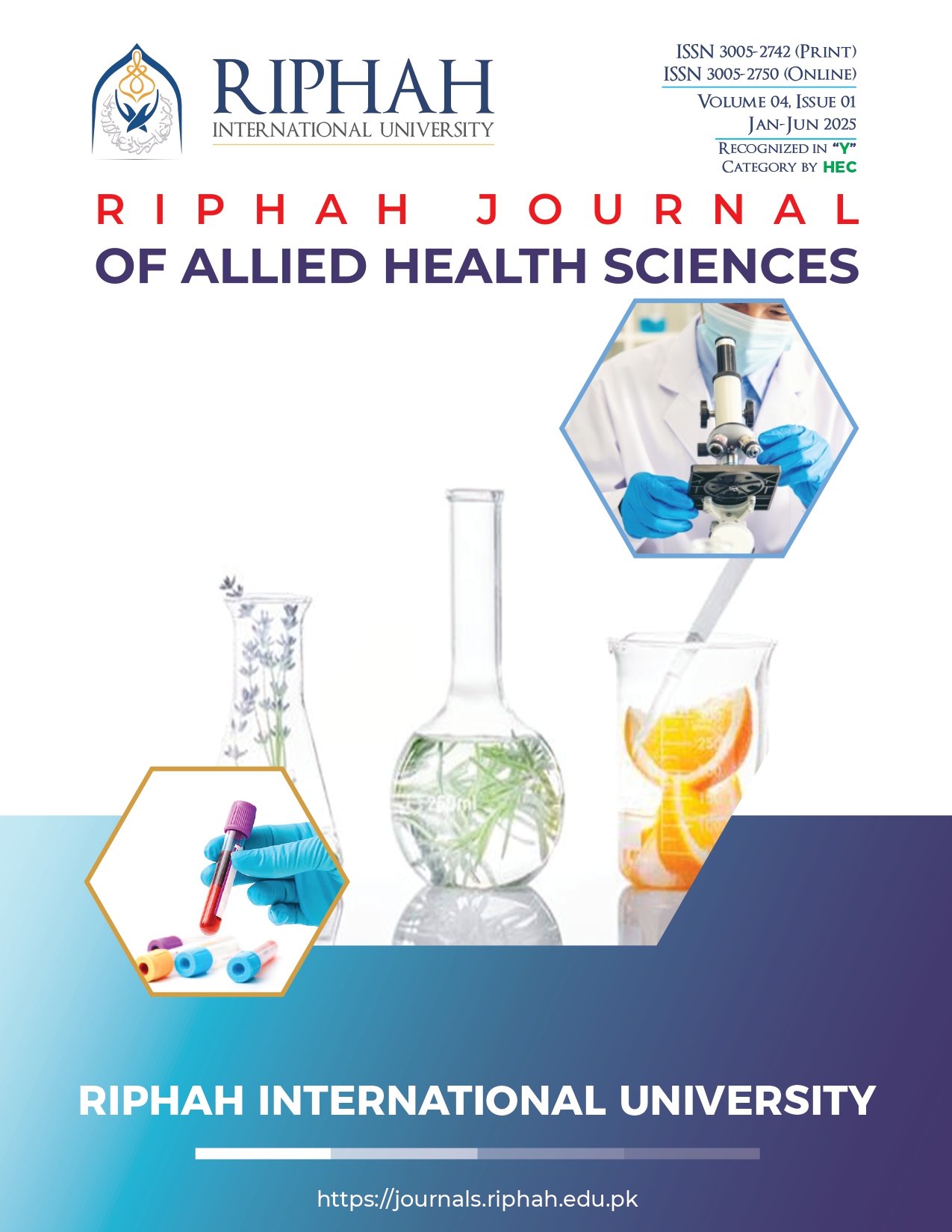Antimicrobial effect of honey against bacteria isolated from dental plaque
Keywords:
Honey, dental plaque, bacterial isolation, Lactobacillus, P. aeruginosaAbstract
Background: Biofilm formation on the tooth surface is a major health concern that leads to dental plaque and caries formation. Two common bacteria, Lactobacillus which is responsible for dental caries and Pseudomonas aeruginosa that leads to plaque formation and other periodontal diseases, were selected to evaluate antimicrobial activity of honey.
Objective: This study was designed to investigate the antibacterial activity of honey with special emphasis on finding the concentration-related effects against Lactobacillus and Pseudomonas aeruginosa using natural and commercially available honey.
Methodology: Different concentrations of natural and commercial honey (100%, 80%, 60%, 40%, and 20%) were tested to evaluate their antimicrobial activity. Each concentration was tested in triplicate to ensure accuracy and reproducibility of the results. Zones of inhibition (ZOI) were measured in millimeters using a standard ruler, and the average diameter from the three replicates was recorded for each sample. Statistical significance was assessed using t-tests and analysis of variance (ANOVA).
Results: Results indicated that natural honey exhibited stronger antimicrobial activity against Lactobacillus, showing a 16 mm zone of inhibition (ZOI), compared to 11 mm for commercial honey. At 100% concentration, the difference in ZOI values between the two honey types was statistically significant (p < 0.05). However, at 80%, 60%, and 20% concentrations, the p-values were greater than 0.05, suggesting similar inhibition rates for both honey types. For Pseudomonas aeruginosa, natural honey demonstrated a ZOI of 20 mm at 100% concentration and 17 mm at 80%, with p-values less than 0.05 in both cases. This indicates a statistically significant difference in antibacterial activity between natural and commercial honey at these concentrations.
Conclusion: It was concluded that both natural and commercial honey exhibit comparable antibacterial activity against both microbes at certain concentrations. Overall, natural honey demonstrated higher antibacterial potential than artificial honey.


